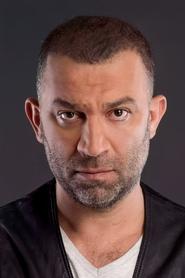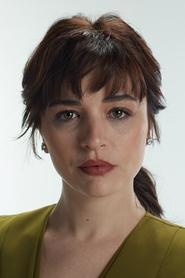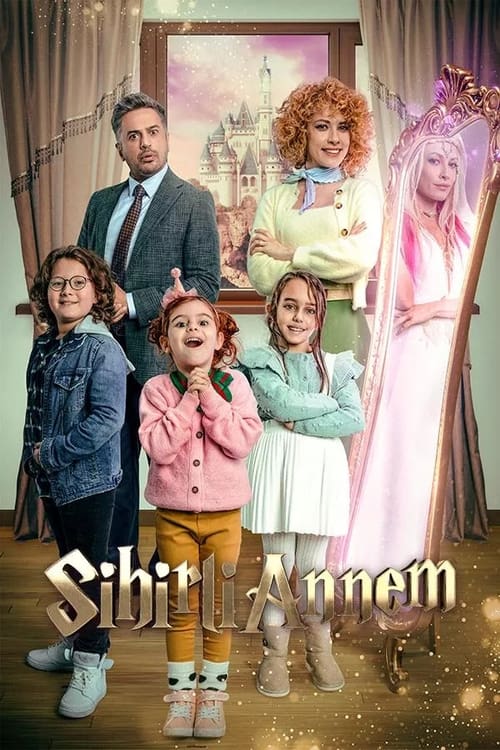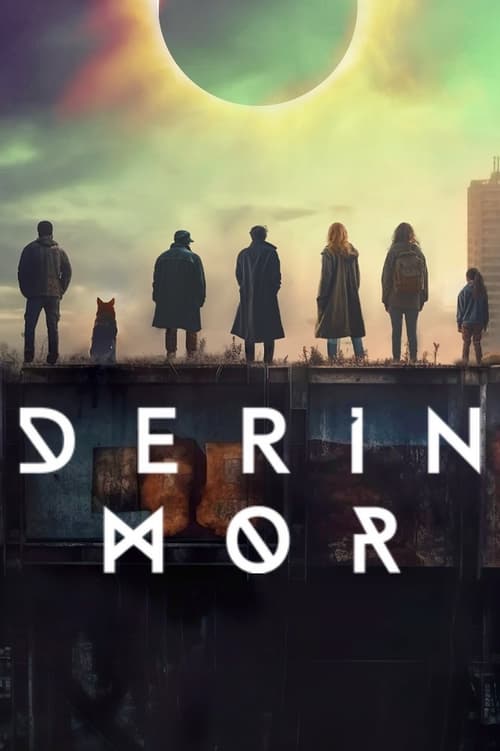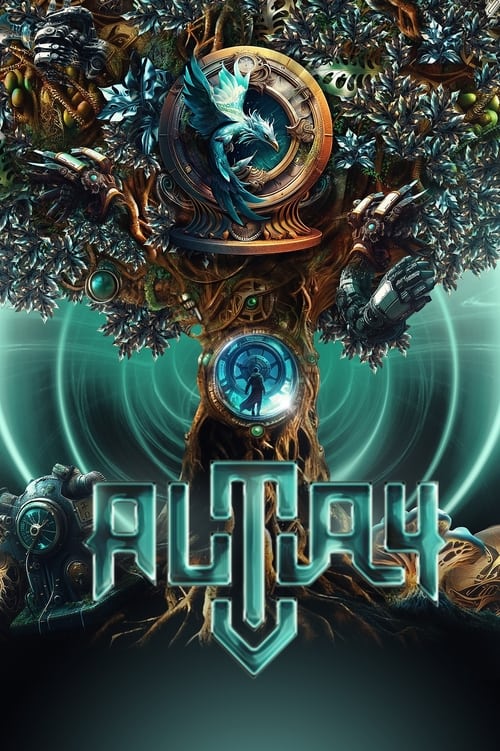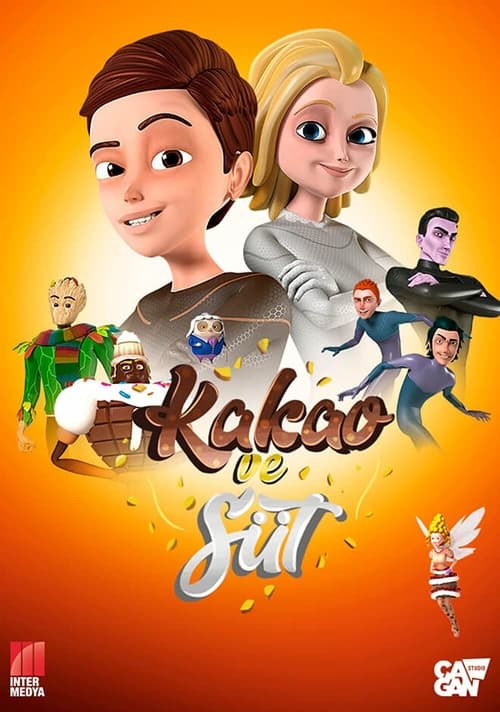
Ask Your Own Question
What is the plot?
In the opening scene of "High Fever," the protagonist, Murat, is seen struggling with the aftermath of the viral outbreak that has left many in his world infected and in a state of paranoia. He is in a dimly lit room, feverishly searching for a way to escape the chaos outside. The atmosphere is tense, filled with the sounds of distant sirens and muffled cries, reflecting the societal breakdown caused by the epidemic.
Murat receives a call from his friend, who is in a panic, revealing that he has been exposed to the virus. This news heightens Murat's anxiety, as he grapples with the fear of becoming infected himself. He decides to meet his friend, hoping to help him and gather more information about the virus. As he prepares to leave, he takes a moment to look at a photo of his family, showcasing his deep emotional connection and the stakes involved in his journey.
Upon arriving at his friend's location, Murat finds the place in disarray. His friend is visibly ill, exhibiting symptoms of the virus, and is desperate for help. Murat tries to comfort him, but the situation escalates when they hear a commotion outside. A group of infected individuals is approaching, and Murat must make a quick decision to protect himself and his friend. He helps his friend barricade the door, but the tension mounts as they hear the infected pounding on the entrance.
In a moment of desperation, Murat decides they need to escape through a back window. They manage to slip out just as the infected break through the front door. The escape is frantic, with Murat pulling his friend along as they navigate through dark alleyways, the sounds of chaos echoing behind them. Murat's internal struggle is palpable; he feels the weight of responsibility for his friend's safety while battling his own fear of the virus.
As they reach a safer area, Murat's friend collapses from exhaustion and fever. Murat, now faced with the reality of his friend's condition, must decide whether to seek medical help or continue hiding. He chooses to find a nearby clinic, driven by the hope of saving his friend. The journey to the clinic is fraught with danger, as they encounter more infected individuals. Murat's heart races as he navigates through the streets, constantly on the lookout for threats.
At the clinic, Murat is met with a grim scene. The facility is overwhelmed with patients, and the staff is struggling to manage the influx of the infected. Murat's desperation grows as he pleads for assistance for his friend, but the medical personnel are stretched thin and unable to provide immediate help. The emotional weight of the situation hits Murat hard, as he realizes the extent of the crisis and the limitations of the healthcare system.
In a pivotal moment, Murat overhears a conversation about a potential treatment for the virus. This sparks a glimmer of hope, and he decides to take matters into his own hands. He sneaks into a restricted area of the clinic, searching for the treatment. The tension builds as he navigates through the dimly lit corridors, aware that he could be caught at any moment.
Murat finally locates the treatment but is confronted by a security guard. A tense standoff ensues, with Murat trying to reason with the guard while also preparing to defend himself if necessary. The guard, seeing Murat's determination, hesitates, allowing Murat to make a quick escape with the treatment in hand.
Returning to his friend, Murat administers the treatment, but the outcome is uncertain. He watches anxiously as his friend's condition fluctuates, feeling a mix of hope and dread. The emotional stakes are high, as Murat reflects on the fragility of life and the bonds of friendship in the face of a devastating crisis.
The episode concludes with Murat sitting by his friend's side, the weight of the world on his shoulders. He is determined to fight against the odds, embodying resilience in a world that has been turned upside down by the virus. The final shot lingers on Murat's face, capturing his resolve as he prepares for whatever challenges lie ahead.
What is the ending?
In the ending of "Hot Skull," Season 1, Episode 4 titled "High Fever," the protagonist, Murat, faces a critical moment as he grapples with the consequences of the fever that has been spreading. The episode culminates in a tense confrontation that tests his resolve and the relationships he has built. The fate of Murat and the other characters hangs in the balance as they navigate the chaos surrounding them.
As the episode unfolds, we find Murat in a dimly lit room, the air thick with tension. He is feverish, his body wracked with chills, and his mind racing with thoughts of survival. The fever, a metaphor for the chaos in the world outside, has begun to take its toll on him, blurring the lines between reality and hallucination. Murat's internal struggle is palpable; he is torn between his desire to protect those he cares about and the overwhelming sense of despair that the fever brings.
In a series of flashbacks, we see glimpses of Murat's past, revealing his motivations and the relationships that have shaped him. These memories serve as a stark contrast to his current state, highlighting the stakes of his situation. He recalls moments of connection with his friends and family, which fuels his determination to fight against the fever's grip.
The scene shifts back to the present, where Murat is confronted by a group of individuals who are also affected by the fever. They are desperate, their eyes wild with fear and uncertainty. Murat tries to reason with them, urging them to band together for survival. However, the fever has twisted their minds, leading to paranoia and mistrust. The tension escalates as they argue, each person grappling with their own demons.
In a pivotal moment, Murat's closest ally, a character named Zeynep, steps forward. She is also suffering from the fever, but her resolve remains strong. Zeynep challenges the group to find a way to work together, emphasizing the importance of unity in the face of adversity. Her words resonate with Murat, reigniting his hope.
As the confrontation reaches its peak, the group is suddenly attacked by a rival faction, further complicating their situation. In the chaos, Murat and Zeynep fight side by side, showcasing their bond and commitment to each other. The battle is fierce, and the stakes are high, with both characters pushing themselves to their limits.
In the aftermath of the conflict, the group is left battered but alive. Murat, though still feverish, emerges as a leader, having faced his fears and the reality of their situation. Zeynep stands by his side, their connection stronger than ever. The episode ends on a note of uncertainty, with the characters aware that the fight against the fever is far from over, but they are now united in their struggle.
Murat's fate is one of resilience; he has faced the fever and emerged with a renewed sense of purpose. Zeynep, too, finds strength in their partnership, suggesting that hope can be found even in the darkest of times. The episode closes with a lingering sense of tension, leaving viewers eager to see how the characters will navigate the challenges that lie ahead.
Is there a post-credit scene?
In "High Fever," the fourth episode of "Hot Skull," there is no post-credit scene. The episode concludes without any additional content after the credits roll, focusing instead on the resolution of the episode's main plot and character arcs. The narrative wraps up the intense events of the episode, leaving viewers with a sense of closure regarding the immediate storyline while still maintaining the overarching tension of the series.
What happens to Murat when he contracts the fever?
In episode 4, titled 'High Fever', Murat experiences a severe reaction after contracting the fever, which is a central plot point. His physical state deteriorates rapidly, showcasing intense symptoms that reflect the dire consequences of the disease. The fever heightens his internal struggles and fears, pushing him to confront his vulnerabilities.
How does the fever affect the dynamics between Murat and his companions?
The fever creates a palpable tension among Murat and his companions. As Murat's condition worsens, his friends grapple with their fear of infection and the emotional weight of potentially losing him. This situation forces them to confront their loyalties and the fragility of their relationships, leading to moments of both conflict and solidarity.
What role does the character of Zeynep play in this episode?
Zeynep plays a crucial role in episode 4 as she becomes a source of support for Murat during his feverish state. Her emotional investment in his well-being highlights her character's depth and commitment, as she navigates her own fears while trying to keep Murat grounded and hopeful amidst the chaos.
How does the setting contribute to the atmosphere during the fever outbreak?
The setting in 'High Fever' is depicted with a sense of urgency and claustrophobia, as the characters are often confined to close quarters while dealing with the outbreak. The dimly lit environments and the oppressive heat amplify the tension, creating a visual representation of the characters' internal struggles and the looming threat of the fever.
What internal conflicts does Murat face while dealing with the fever?
Murat's internal conflicts are vividly portrayed as he battles the fever. He grapples with feelings of helplessness and fear of losing control over his own body and mind. This struggle is compounded by his desire to protect his friends from the disease, leading to moments of self-doubt and reflection on his role within the group.
Is this family friendly?
In "High Fever," the fourth episode of "Hot Skull," there are several elements that may be considered objectionable or upsetting for children or sensitive viewers.
-
Intense Emotional Scenes: The episode features characters experiencing high levels of stress and fear, which may be distressing for younger audiences.
-
Violence and Threats: There are moments of physical confrontation and implied violence that could be unsettling.
-
Illness and Suffering: The theme of a contagious disease and its effects on individuals can be disturbing, especially for those sensitive to health-related issues.
-
Dark Atmosphere: The overall tone of the episode is tense and foreboding, which might be overwhelming for some viewers.
-
Mature Themes: The narrative explores themes of survival and desperation, which may not be suitable for all children.
These aspects contribute to a more mature viewing experience, and parental discretion is advised.




